WAS THAT AN EARTHQUAKE? IN NYC!?! (2024)
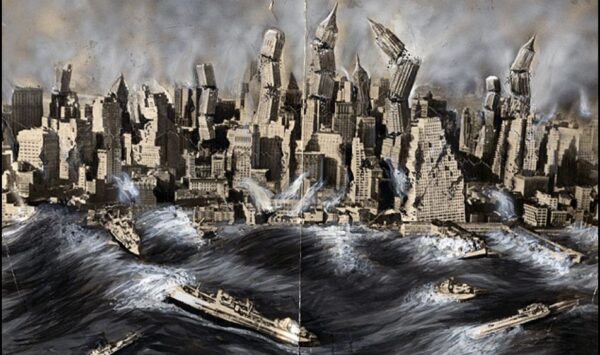
******************************************************************************************************************************** Brownstone Detectives investigates the history of our clients’ homes. The story you are about to read was composed from research conducted in the course of one of those investigations. Do you know the history of YOUR house? ******************************************************************************************************************************** Startling! At a magnitude of 4.8 on the Richter Scale, the earthquake we just experienced in New York City was the 4th largest in history, according to Columbia University. Only three were bigger: 1) A 5.2 magnitude in 1844 – whose epicenter was determined to be located in Brooklyn – accounts varied from broken crockery to an actual claim of death from fright; 2) a 5.2 magnitude in 1737 – terrified New Yorkers reported cracked chimneys and plaster, broken windows and objects thrown from shelves throughout the city; and 3) a 4.9 magnitude in 1783 – although this earthquake awoke many people in City of New York, George Washington, who was staying at the Fraunces Tavern at the time, was not one of them. Each of these three earthquakes reportedly “threw down chimneys!” Take a look at this graph from Columbia University’s Lamont-Doherty Observatory. Follow @BrownstoneDetec Share ———————————————————————————————————————– The Brownstone Detectives Brownstone Detectives is an historic property research agency. Our mission is to document and save the histories of our clients’ homes. From our research, we produce our celebrated House History Books and House History Reports. Contact us today to begin discovering the history of your home.
THE FARMS LINES OF BROOKLYN (1874)
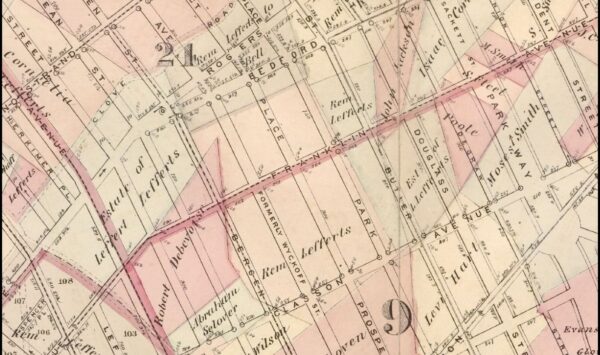
******************************************************************************************************************************** Brownstone Detectives investigates the history of our clients’ homes. The story you are about to read was composed from research conducted in the course of one of those investigations. Do you know the history of YOUR house? ******************************************************************************************************************************** Brooklyn was once one giant farm. At some point, as the farms began to be split up to be sold to developers – those who wanted to build rows of prized brownstones – companies also began to pop up which developed maps showing what types of buildings existed on every “lot” within the city. Although no longer used for fire insurance purposes, they are great tools for those owners wishing to research the histories of their properties. If you own a home in New York City, these maps can help you to determine how old it is, what else had been built in the area when your house was new, and, on some maps, the name of the farmer that had once owned your land. Find yours HERE. Follow @BrownstoneDetec Share ———————————————————————————————————————– The Brownstone Detectives Brownstone Detectives is an historic property research agency. Our mission is to document and save the histories of our clients’ homes. From our research, we produce our celebrated House History Books and House History Reports. Contact us today to begin discovering the history of your home.
THE “WEIRFIELD” HOUSE ON THE HILL (1850)
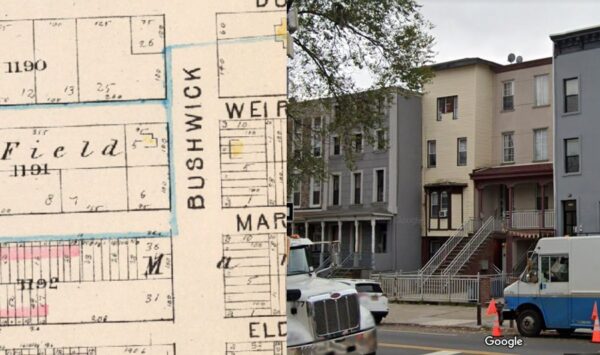
******************************************************************************************************************************** Brownstone Detectives investigates the history of our clients’ homes. The story you are about to read was composed from research conducted in the course of one of those investigations. Do you know the history of YOUR house? ******************************************************************************************************************************** If Bushwick Avenue were a family, it would likely be an entertainingly and curiously dysfunctional clan. It would maybe be something akin to that harmless uncle who comes to Thanksgiving dinner, doesn’t talk about politics, but engages in witty banter and sips a few too many vermouths. Some houses on the avenue present as mindlessly conforming rowhouses — lined up at attention like toy soldiers. Squeezed within some of those rows, however, we sometimes find structures that seem oh-so-slightly out-of-place – as though they were built in – and transported from – another time and galaxy. One such structure is a 172-year-old house that appears as though it should be sitting alone upon a hill with a view to unfolding valleys of pastureland. THE HOUSE ON THE HILL In the mid-1800s, No. 1250 Bushwick Avenue was the only house on the south side of Bushwick Avenue between Weirfield and Margaretta (Halsey) Streets. The house was erected in approximately 1850 and, in its day of glory, stood on a knoll about six feet above street level, flanked on either side by immense maple trees. The grounds sloped gently down to a stone wall, five feet above the grade of the street, which extended along the street frontage from Weirfield street to Margaretta […]
EDGAR ALLAN POE’S ODE TO POLK (1844)

******************************************************************************************************************************** Brownstone Detectives investigates the history of our clients’ homes. The story you are about to read was composed from research conducted in the course of one of those investigations. Do you know the history of YOUR house? ******************************************************************************************************************************** A more improbable story you may have never heard – but Edgar Allan Poe may have been partially responsible for electing James Polk president. A TEA STORE, A FRIENDSHIP, AND THE WHITE EAGLE CLUB… Remembered from the campaign year of 1844, erstwhile actor and artist Gabriel Harrison recounted for the Brooklyn Daily Eagle his encounter with Edgar Allan Poe. Harrison had met him one evening as the latter was peering through the plate-glass window of his tea store. “It was in the Fall of 1843 or ’44 that I first became acquainted with Poe,” Harrison mused. “At that time I was the President of the White Eagle Club, New York, and kept a tea store on the southeast corner of Broadway and Prince street, then Mr. William Niblo’s property. “One evening I observed a person looking intently through my windows at a display of some Virginia leaf tobacco. After some minutes he entered the store, spoke of the beauty of the leaf and its quality. He took a very small bit of it in his mouth, and further remarked that he might be considered a small user of the Solace. In a few days after he called again. “On this occasion I was endeavoring to compose a campaign song for my […]
WHEN MAY DAY WAS MOVING DAY (1847)
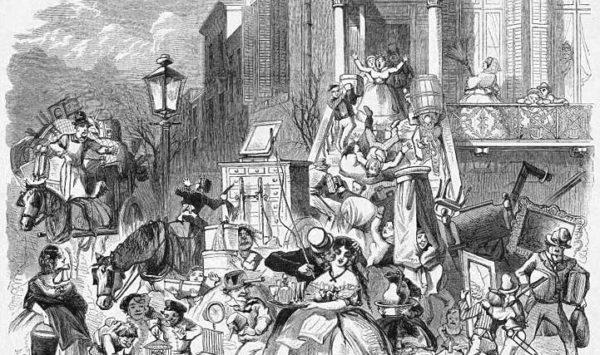
******************************************************************************************************************************** Brownstone Detectives investigates the history of our clients’ homes. The story you are about to read was composed from research conducted in the course of one of those investigations. Do you know the history of YOUR house? ******************************************************************************************************************************** Imagine, as a New York renter, waiting with dread every year for May 1 to arrive. It meant that you, like many untold thousands of other renters in the city, had to move. Now, consider the competition for hiring moving vans and movers – and the surge pricing associated with every aspect of it. This was exactly what took place in New York City on the first day of May starting in the early 19th century and lasting for about 120 years through WWII. While the annual event may have originated as a custom, the tradition was actually couched in law in 1820 when an act of the New York State legislature was passed into law, mandating that all housing contracts were valid unto the first of May (unless the day fell on a Sunday, in which case the deadline was May 2). In other words, the landlord basically had his tenants by the law. And it rarely ended well for the tenants. According to the New York Times, February 1, sometimes known as “Rent Day,” brought landlords togive notice to their tenants what the new rent would be after the end of the quarter, and the tenants would spend good-weather days in the early spring searching for new houses and […]
A STREET GROWS IN BROOKLYN (1845)
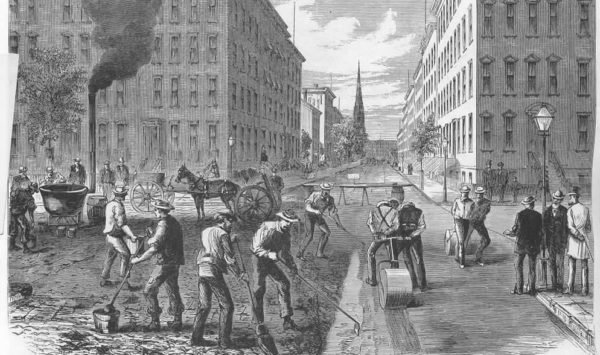
******************************************************************************************************************************** Brownstone Detectives investigates the history of our clients’ homes. The story you are about to read was composed from research conducted in the course of one of those investigations. Do you know the history of YOUR house? ******************************************************************************************************************************** The growth of brownstone Brooklyn took place over a great many years. The long contiguous lines of rowhouses rocketed skywards across the city through the economic good times, as well as – at a less robust pace – through the many debilitating recessions. But rocket they did, leaving the footprints of the many contractors and builders who changed the landscape of Brooklyn into a City of Houses. Another mark that the contractors and builders left – although one not as celebrated today – was the complicated system of flagging, pipes, sewers, cisterns, streetlamps, and sometimes trolley tracks, that lined the streets and led to those very rowhouses. Each delivery and receiving system that connected each rowhouse to the city was an important step toward the development of the city. Before each row of houses was constructed (and sometimes while they were being constructed, or even soon afterwards), the development of each street and neighborhood was an important part of attracting the homeowners to Brooklyn. THE BIRTH OF BOERUM HILL Boerum Hill had only recently been planned for with a street grid system that would develop alongside of a vast network of sidewalks, sewers, street lamps, gas lines, and water mains. At this time, however, in the 1840s, it barely resembled such […]
MAD DOGS & BROOKLYN MAYORS (1844)
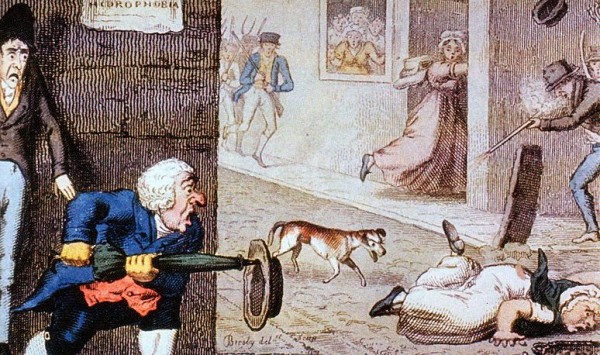
******************************************************************************************************************************** Brownstone Detectives investigates the history of our clients’ homes. The story you are about to read was composed from research conducted in the course of one of those investigations. Do you know the history of YOUR house? ******************************************************************************************************************************** In Brooklyn in 1843, there was a dog problem. A MAD dog problem. The people of Brooklyn – in what makes up Brooklyn Heights and the Downtown Brooklyn area today – were getting fed up with the number of strays, a good number of which were exhibiting “mad” tendencies, biting Brooklynites from time to time. A newspaper of the period complained of how “our streets are filled with miserable, half-starved curs whose dismal howlings make night hideous.” They demanded, thus, that a law be enacted to “shield us from that frightful malady – hydrophobia.” A FEAR OF WATER Back in the day, the disease that we know today as rabies was called hydrophobia. The disease was labeled hydrophobia – or a fear of water – because its subjects were not only unable to swallow water, but they had such a fear of it that it sent them into spasms or running from its very presence. And, of course, there was no cure for hydrophobia. Although, there was no shortage of quacks who sold “instant cures” to the masses through the mails or in their offices – such as the goodly Dr. S. Bachelder, across the East River at 343 Broome Street on Manhattan. Bachelder offered “Thompsonian and other Botanic Medicines” for […]
THE “IMPOSING” VIEW FROM OCEAN HILL (1848)
******************************************************************************************************************************** Brownstone Detectives investigates the history of our clients’ homes. The story you are about to read was composed from research conducted in the course of one of those investigations. Do you know the history of YOUR house? ******************************************************************************************************************************** Before there was Ocean Hill—the Bedford-Stuyvesant neighborhood—there was Ocean Hill—the section of Green-Wood Cemetery. Whether one influenced the other is lost to the ages. What is clear, however, is that both locations got their names from a geographical point from which a body of water could clearly be viewed. “At this point, now known as Ocean Hill,” described a contributor (whose pen-name, revealingly, was Investment) in an edition of the Brooklyn Daily Eagle published just a few years before the Civil War began, “we have reached the highest point on the avenue (Fulton Street) and the most commanding elevation of ground in the city; and which, for grandeur, beauty and variety of its scenery, cannot be surpassed. “The ocean view,” Investment continued, “is especially grand and imposing.” Investment, whose contribution to the paper existed as a thinly veiled promotional piece for Brooklyn, was describing the “advance in the value of Brooklyn real estate.” From Fulton Ferry he advanced down Fulton Avenue to “gather such information as will enable the public to form an intelligent estimate as to the present and prospective value of property on and near this great thoroughfare.” “At this point Fulton avenue is distant but a few hundred feet from Atlantic avenue on the south, and Broadway on […]
THE “GOODFELLAS” OF CUMBERLAND STREET
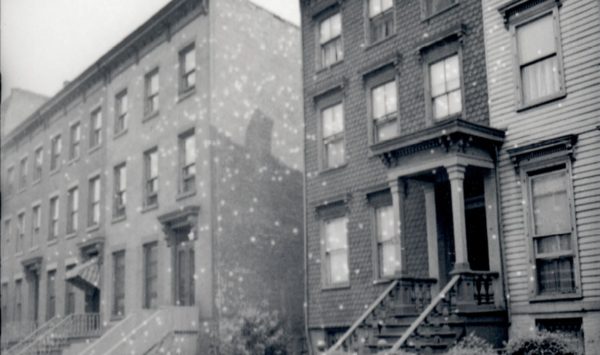
One of the Brownstone Detectives’ first House History Books, No. 231 Cumberland Street: The Story of a House, tells the story of an 1852 antebellum frame home just steps from Fort Greene Park. It’s an action-packed tome, replete with treachery, “poudrette,” “small art,” SROs, and the gangland figures from “Goodfellas.” Here is a brief timeline of the history of this single landmarked property, matched up with “spreads” from the book: THE HISTORY OF A BROOKLYN HOUSE The land beneath which No. 231 would someday rise, started out as a tobacco farm owned by the first Italian immigrant to New York, Pietre Cesare Alberti. The farmland would eventually be built upon in 1851-2, when builder John Ross constructed a row of three homes there. First owned by a woman with a tragic history, a melodrama involving treachery, another man, and an infant daughter – which became the gossip of the newspapers of the time – No. 231 was rented out throughout the the 1850s and 1860s, in addition to many returning Civil War veterans, to merchants and their small families. One of those merchants featured prominently in the founding of the Lafayette Avenue Presbytery Church. Before this, however, he had begun his interesting career as a Night Soil Man – starting a company which, amongst other “agricultural” endeavors, collected human excrement from the backyard privvies of Brooklyn, selling this “compost” to Long Island farmers as the appropriately – if euphemistically – named “poudrette.” The property was then owned by an immigrant, […]
UNPRINCIPLED MONKEY-FACE (1843)
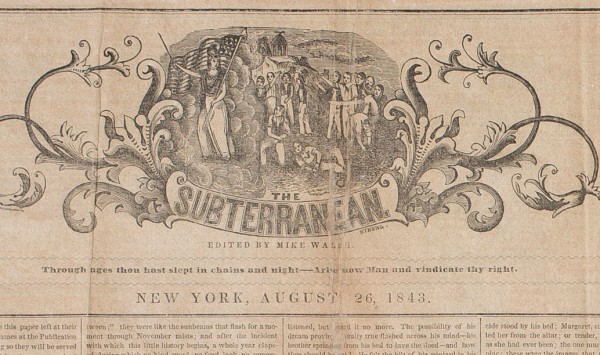
Newspapers in the early 1800s had fewer guidelines to follow than today’s papers do. The only serious standards editors were certain to follow back then were those concerning making money and keeping the number of libel lawsuits down. One Manhattan newspaper, The Subterranean, truly lived up to its name in terms of the depths the owners would go to expose the dirt of others living upon the island at the time. “If the unprincipled, monkey-faced blackguard with dirty whiskers, who works in a cooper’s shop in First street, near Avenue A, does not desist in his disgraceful annoyance of the young ladies in Houston street, we shall strip the hide off of him,” the paper’s editor wrote, in an attempt to sully the already low reputation of a certain character residing in what would be today’s Bowery. “We have been informed that he stole two work bags the other evening, and would have committed other depredations, were it not for the timely interference of a young butcher, who chastised him on the spot.” The Subterranean, which was “committed to the interests of the working classes” and was written for at one time by Walt Whitman, was literally replete with colorful stories about various “fanatical traitors, bigoted sectarians, speculators, robbers, bankers and brokers…” According to the American Antiquarian Society, who wrote a story about the conservation of a copy of the 1843 newspaper, “People were named outright, so it’s not surprising these papers were found in the N.Y. District Attorney’s office […]